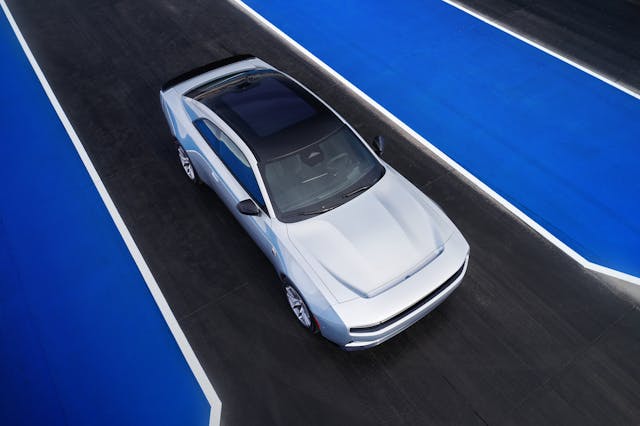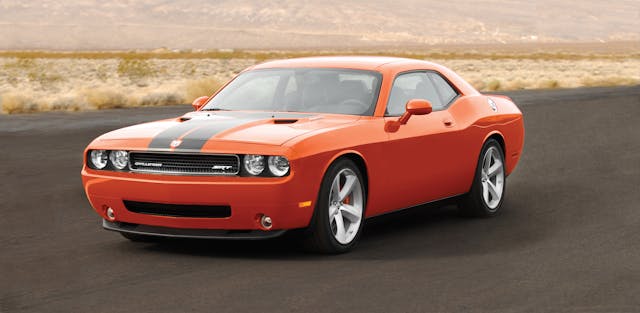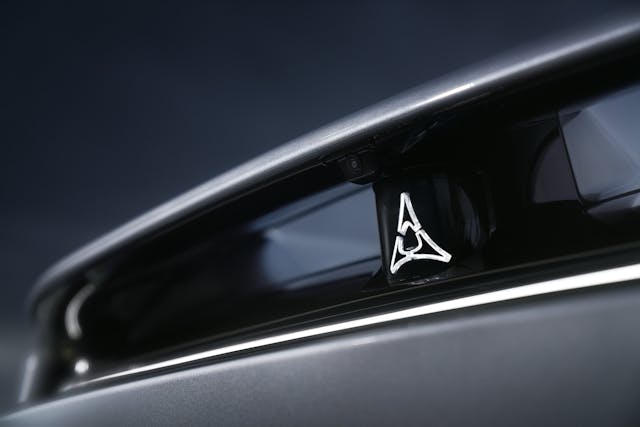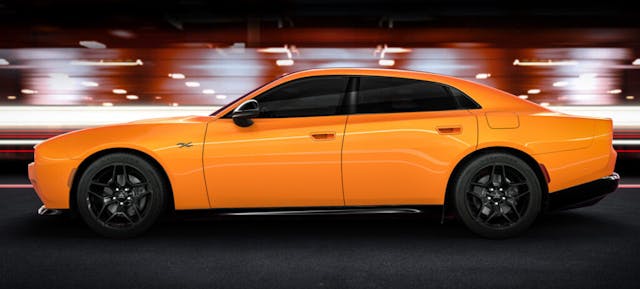Media | Articles
Why the New Dodge Charger Looks So Good
I must confess that, until recently, if I had to pick an automobile brand as the one least likely to survive the industry’s inexorable pivot toward electrification, it would have been Dodge.
After all, with its reliance on muscle cars powered by hulking V-8 engines, the brand already seemed to live in a bygone era, albeit one still very close to the hearts of many. So it seemed inevitable to me that, sooner rather than later, we would be speaking about Dodge the way we do with the likes of Pontiac and Oldsmobile: in past tense only.
But, understandably, the people in charge at Auburn Hills beg to differ. The new Dodge Charger is out to prove that muscle cars can guzzle electrons or the good ol’ dinosaur juice. That’s no mean feat, and it places a considerable burden on the collective shoulders of Stellantis design chief Ralph Gilles and his team.

That’s because in a world where EVs capable of neck-snapping acceleration are commonplace and Dodge can no longer bank on the raw, primal appeal of its supercharged Hemi V-8, the new Charger’s chances of success will largely depend on its looks. But that’s just as well, because Dodge’s designers knocked this one right out of the park.
Everything has changed under the new Charger’s skin. Yet, Dodge’s designers have chosen to wrap the new technology in the reassuring comfort of nostalgia, drawing heavily on design cues from the beloved 1968–70 models. Of course, this is far from the first time they’ve done so, but never before has the end result been so compelling from all angles.




Marketplace
Buy and sell classics with confidence
But let’s break it down, starting from the fundamentals.
Beauty in automobile design is, above all, a matter of proportions, and those who worked on the new Charger clearly got the memo. Dare I say, the new Charger has the proportions its 1968 namesake wishes it had.
Mind you, having grown up watching the Duke boys thrashing Dodge B-bodies on the telly over and over, I love the classic late ’60s Charger as much as everyone else does. Still, to my eye, the old model’s front overhang has always seemed a touch longer than it should have been. And don’t get me started on the size of the wheels and how far inset they were into the fenders!

That’s not the case with the new Charger, though. Its 20-inch wheels neatly fill the arches, and the front overhang has been kept nice and short. On the other hand, the generous length of the rear overhang allows the roofline to gracefully taper into the rear deck as it did on the classic model. So, in typical muscle-car fashion, the cabin’s volume extends rearward on the new Charger to visually “sit” over the rear axle. This helps make the car look purposeful, like a beast ready to pounce.

Once the vehicle’s basic proportions are set, the second ingredient of automobile design is what I like to call the “sculpture,” or the way exterior surfaces are modeled and interplay with one another. And I’m pleased to notice that in this regard, the new Charger is a significant step forward from Dodge’s previous efforts.


To me, the 2008 Challenger and, to a lesser extent, the 2011 Charger have always looked a bit too plump and heavy. They were handsome cars, but they lacked the degree of grace and finesse that separates a good design from an outstanding one.
But while I’ll stop short of declaring the new Charger a masterpiece, the overall execution is on another level compared to its predecessors. The body surfaces are taut, the lines are pin-sharp, and the way the chunky rear pillars merge into the quarter panels appears to have been treated even better than they were on the concept car from two years ago.

Yet perhaps my favorite aspect of the new Charger’s design is what Dodge’s PR calls the “R Wing.” We’ve already seen that feature on the 2022 concept car, but I’m glad it made production. Not only does it make for a gorgeously sculpted bonnet, but through this aerodynamic device, the designers have managed to integrate a key graphic element of the 1968 Charger (its full-width grille) and give it a thoroughly contemporary new function. Well played, Dodge.



Grilles bring us to the third main ingredient of automobile design: graphic elements. This umbrella term includes everything that “cuts” into the vehicle’s main volume, like the windows, the air intakes, the headlights and taillights, right down to and including the shutlines separating the various body panels. Dodge’s designers thankfully chose to keep things clean and functional on this front, and all the better for it.

However, I really wish Dodge went the extra mile and splurged for flush door handles. On the clean, sharp bodysides of the new Charger, those door handle recesses stick out like a sore thumb, especially so on the four-door variant. Curiously, the photo album accompanying Dodge’s press release features the two-door Charger much more prominently than the four-door, even though the latter will invariably take the lion’s share of sales. In fact, I wouldn’t be surprised if the four-door ends up making the two-door redundant altogether, as it looks just as attractive and is going to be way more practical.

So, the case is closed. I was wrong, and the future of Mopar muscle is bright and safe. Or is it?
Dodge had no trouble selling the outgoing Charger and Challenger models until the very end of their run, despite their age, which shows just how much love there still is for the Hemi V-8.
And that’s something no amount of digital gizmos or a few tenths shaved off a quarter mile can replace. Sure, Dodge is hedging its bets by bringing out a twin-turbo straight-six version of the new Charger next year, but whether that will be enough to keep its fans happy—or bring in new ones to replace them—remains to be seen.
Time will tell us if Mopar muscle still has a place in our electric future, but one thing is clear enough: Dodge has just made one hell of a case for it.

***
Check out the Hagerty Media homepage so you don’t miss a single story, or better yet, bookmark it. To get our best stories delivered right to your inbox, subscribe to our newsletters.




















Will they make it so you can remove the golf cart driveline and replace it with something better AKA a Hemi?
This is the best looking Charger since the ’66 and ’67. I found the ’68 to ’70 to be quite a disappointment. I am very pleased with the 2025. It has the best front and rear in decades. I really like the revival of the classic Fratzog emblem. Price this right and it should sell better than previous models.